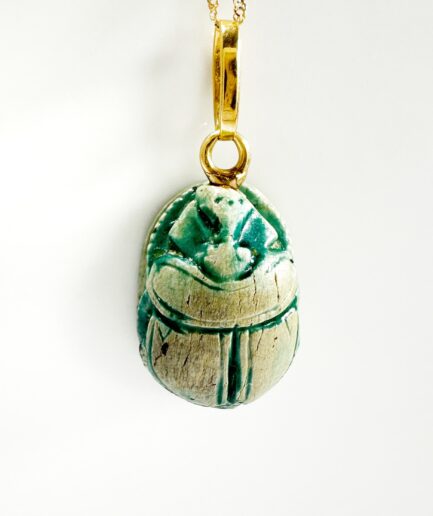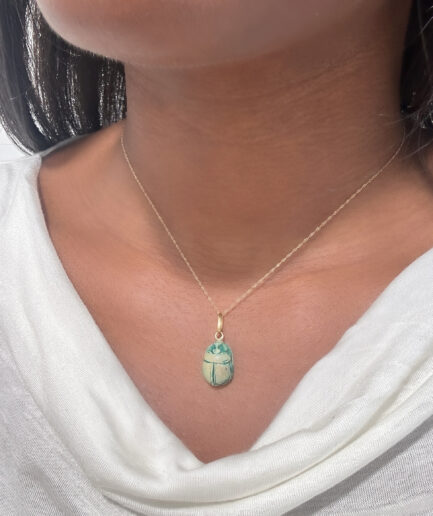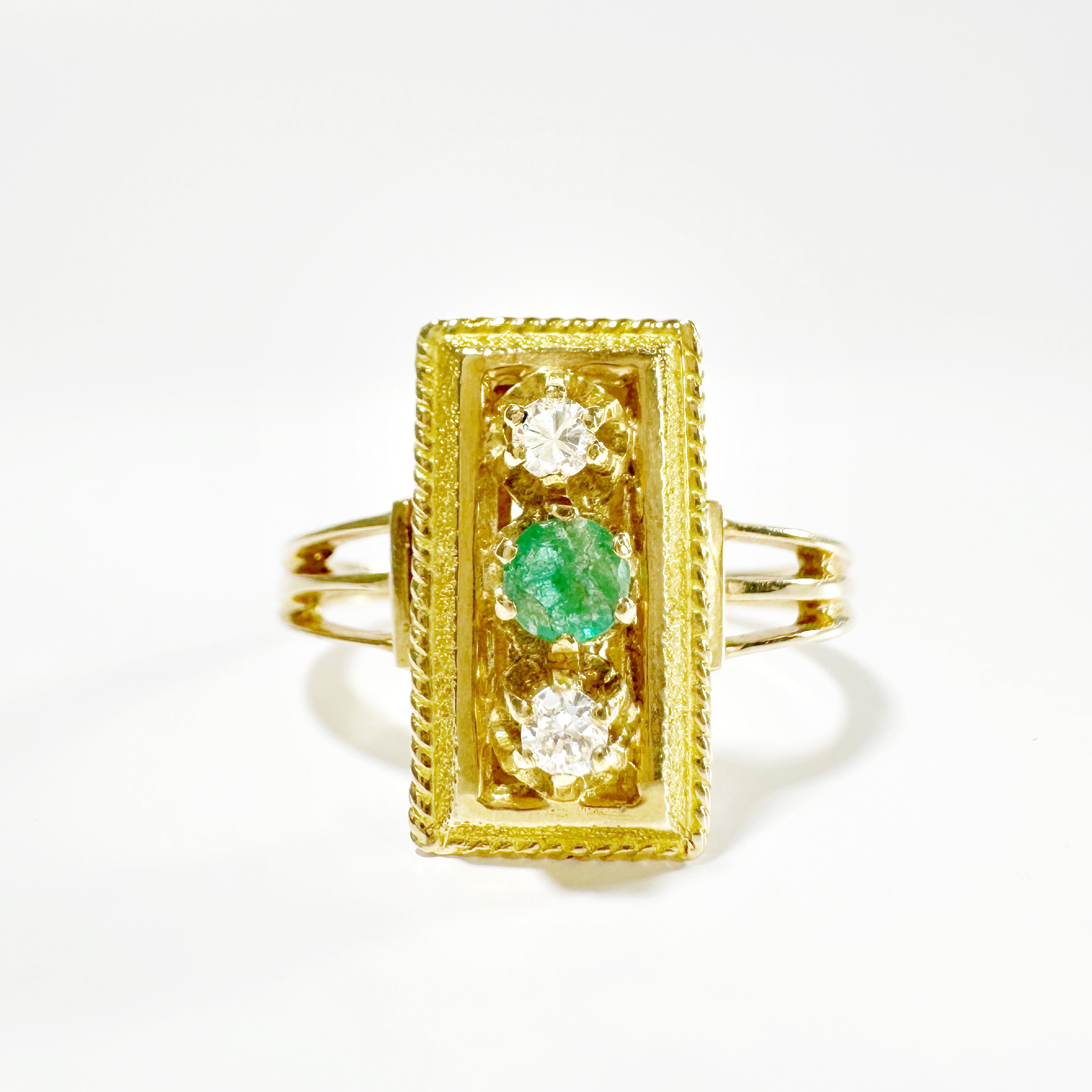Used as early as the 4th millennium BCE, particularly by the Egyptians, frit — also known as Egyptian faience — is one of the earliest synthetic materials in history. Highly valued for its vibrant colors, especially its iconic turquoise blue, it was used to make jewelry, amulets, funerary figurines, and decorative elements.
Chemically, frit is a material composed of silica (SiO₂), combined with alkaline salts (often natron or soda) and various metal oxides that give it its hues (copper for blue, iron for green, manganese for black). During firing, some of the salts naturally migrate to the surface, forming a self-generated glaze: a thin glassy layer that gives frit its glossy appearance without the need for an external enamel.
Its porous structure makes it relatively lightweight, but also fragile. Frit is thus distinguished by its vivid beauty, natural shine, and clever chemical composition — a testament to the technical skill of ancient civilizations.
Demander à ChatGPT
 en
en
 Français
Français


